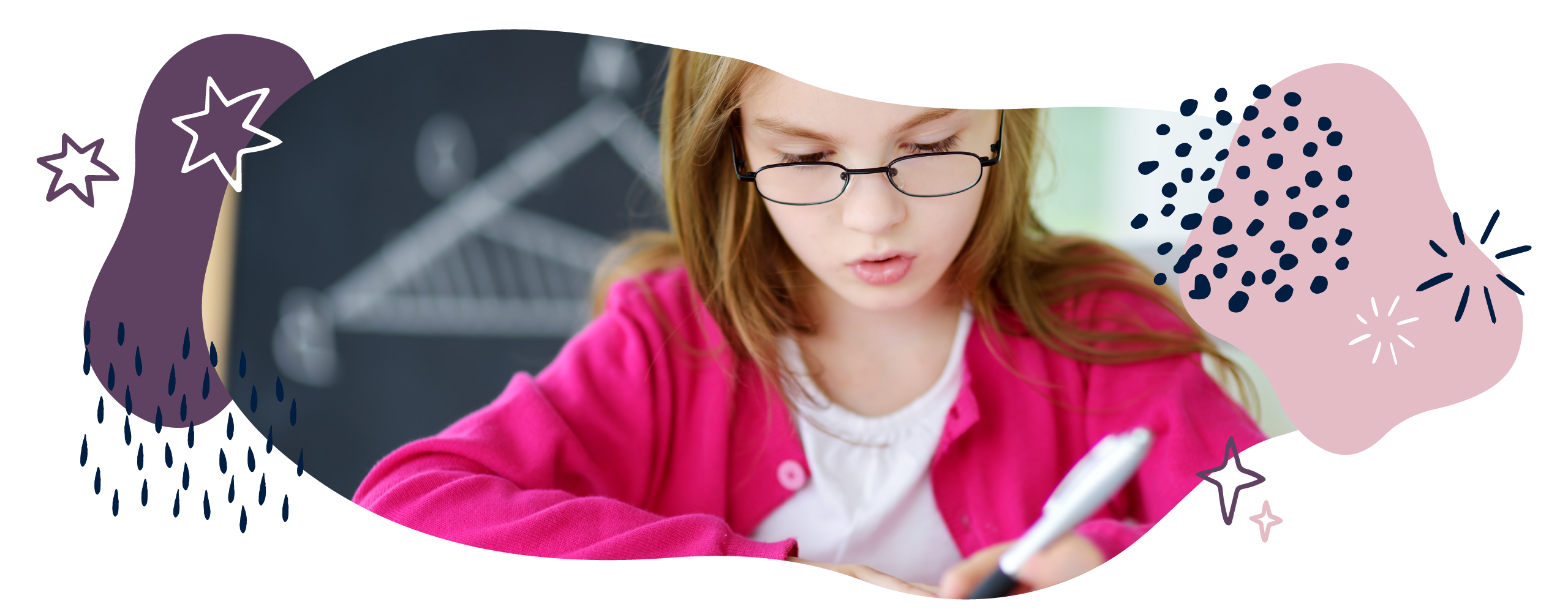Number & place value in Year 1 (age 5–6)
In Year 1, your child will learn to count up to and slightly beyond 100 in multiples of 1, 2, 5, and 10. They will count aloud and will represent numbers using pictures and concrete objects like sticks, straws, and number lines.
The key words for this section are number and place value.
What your child will learn
Take a look at the National Curriculum expectations for number and place value in Year 1 (ages 5–6):
Count forwards and backwards up to 100
Your child will practise counting forwards and backwards using songs or rhymes. They will count up to 100 and maybe a little beyond it, starting from any number between 0 and 100.
Your child will count in order to find out how many objects are in a group, and to talk about the position of objects (for example, “this one is first, this one is second, this one is third,” and so on).
Use and understand numbers in multiples of two, five, and ten
Your child will start to recognise patterns in numbers. For example, they might notice that multiples of five always end with a 5 or a 0.
Your child will understand place value in numbers in the tens. For example, they will know that in the number 25, the 2 represents 2 tens and the 5 represents 5 ones.
They will also be able to out loud count in steps or groups of 2, 5, and 10, starting from 0.
Count more or less from a number
When given a number between 1 and 100, your child should be able to count one up or one down from that number.
1 more than 56 is 57.
1 less than 56 is 55.
Use objects and pictures to represent and identify numbers
Your child should be able to make numbers using objects, such as straws.
31 could be represented by three groups of ten straws and one straw on its own.
Your child could then create drawings to represent what they have made physically, such as 31 = O O O
Your child should also be able to use a number line to count up and down.
Use language like equal to, more than, less than (fewer), most, least
‘I have 3 fewer sweets than you.’
‘There is less water in the glass than in the bottle.’
‘25 is less than 42.’
Your child should also learn to refer to the equals sign (=) as ‘equal to’ rather than ‘the same as.’
Read and write numbers from 1 to 20 in numerals and words
Numerals are the symbols for numbers: 1, 2, 3, and so on. Your child will be able to read and write numerals from 1 to 20.
They will also be able to read and write the words for the numbers 1 to 20: one, two, three, and so on.
How to help at home
There are lots of ways you can help your child to understand number and place value. Here are just a few ideas:
1. Talk about numbers around us
Numbers are everywhere, and they can tell us all sorts of different things. Some numbers tell us about an amount (for example, ‘there are ten sweets in the jar’). Some tell us about position (for example, ‘I finished the race in 2nd place’). And some are just labels (for example, ‘we are waiting for the number 15 bus’).
Talking about how numbers are used in the real world can help your child understand why they are important. For example, you could talk about numbers when you are buying something, or telling the time, or catching a particular bus.
Video: What is number?
Get a simple definition of the concept of number and the difference between cardinal, ordinal and nominal numbers with this fun animation.
2. Count
Your child needs to know why, how, and when to count.
You could practise counting orally through songs and rhymes like ‘Ten Green Bottles’, going forwards and backwards. Have a go with our fun song:
Counting objects around the house is also a good way to make sure your child understands that each number name can represent an amount. Try counting in steps. For example, you could count pairs of socks in twos, use your fingers to count in fives, or count 10p coins in tens.
3. Make representations of numbers
It is important that your child understands what numbers look like, so it is helpful to represent numbers using objects and pictures.
For example, to understand the number 3, children need to understand what 3 really is. We can represent it using the symbol, 3, but it is important to understand what three looks like as a quantity. You could count out three sticks or draw three pictures to help with this.
Your child also needs to understand that numbers can be made up of other numbers. So three can be made of three ones, or a two and a one. Once they reach the teen numbers, we need to show that these are numbers made from one ten, plus several ones. For example, fifteen is made of one ten and five ones. Again, this is much easier to explain to your child using objects or pictures.

